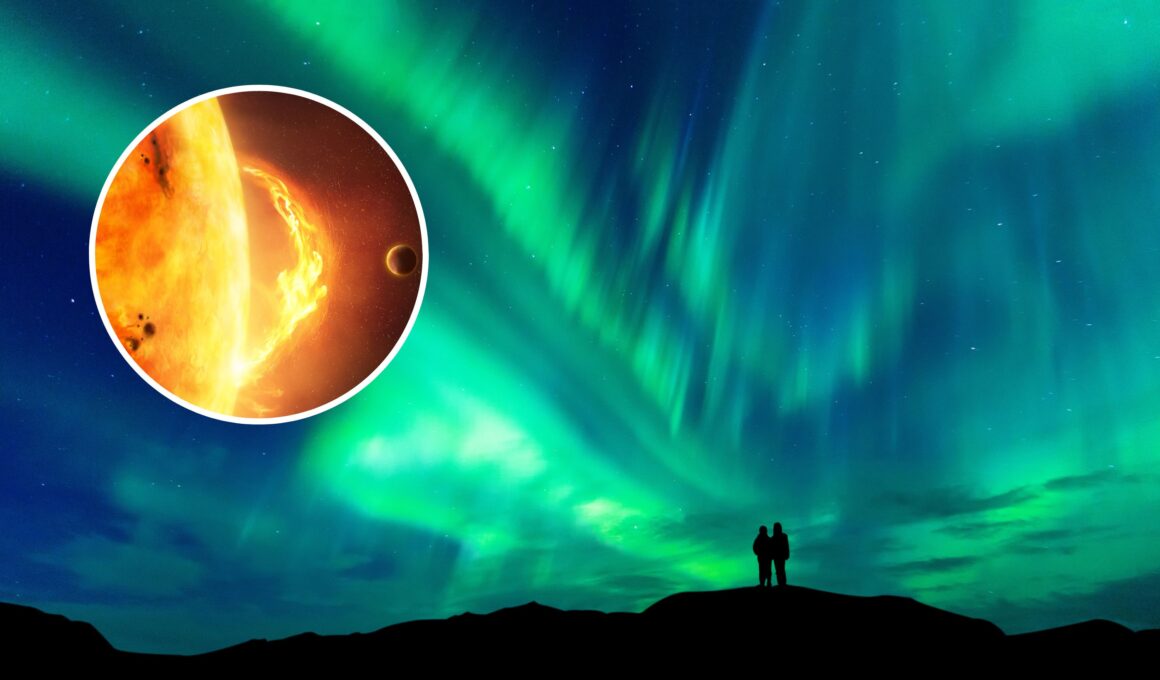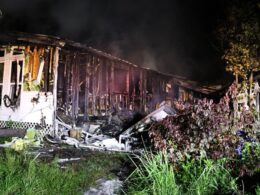The spectacular green and red colors of the northern lights may light up the night sky as far south as Illinois and Oregon this week, thanks to a series of solar storms heading our way.
At least four coronal mass ejections (CMEs) were flung out of the sun over the weekend, and are heading our way, the first two of which have combined into a “cannibal CME”. These CMEs are expected to spark geomagnetic storms ranging between G2-class and G3-class in strength, pushing the aurora further south than usual.
“Periods of G3 (Strong) storming are likely on 30 Jul, with G2 (Moderate) storm periods likely on 31 Jul, due to the anticipated arrival and passage of multiple CMEs from 27-28 Jul,” the NWS Space Weather Prediction Center said in a forecast discussion.
CMEs are giant bursts of solar wind and magnetic fields flung out from active regions of the sun like sunspots, often accompanied by a flash of radiation in the form of a solar flare. These plumes of solar plasma travel rapidly through space, and if heading toward us, may collide with our Earth’s magnetic field, sparking a geomagnetic storm. Sometimes, one CME will overtake and combine with another, forming what is known as a “cannibal” CME, which can lead to stronger geomagnetic storms as a result.
Geomagnetic storms are classed on a scale of G1 to G5, with G2 and G3 being classified as “moderate” and “strong”, respectively.
Both G2 and G3 geomagnetic storms can cause visible auroras and impact technology, but a G3 storm has stronger and more widespread effects. Auroras might be visible as far south as New York or Idaho with G2 storms, while G3 storms can result in them being seen from Illinois or Oregon.
This is because geomagnetic storms allow charged particles from the CME to be funnel down along Earth’s magnetic field lines toward the poles, where they collide with gases in Earth’s atmosphere like oxygen and nitrogen. The gas atoms get excited and then release this energy as light, with oxygen emitting green or red light depending on the altitude of the collision, and nitrogen producing blue or purple hues.
The more powerful the geomagnetic storm, the further away from the poles these northern lights are seen, such as during the May 10 G5-class storm where aurorae were seen across all 50 U.S. states and beyond.
“Distortions of the magnetic field, the increase in the amount of these exciting electrons, and also the puffing up of our higher atmosphere to larger heights extends the regions at the poles where the particles come in touch with our high atmosphere. So as a result, the glowing regions extend further toward the equator,” Daniel Brown, an associate professor in astronomy and science communication at Nottingham Trent University in the U.K., told Newsweek.
These storms may also cause power grid fluctuations, increased drag on satellites in low Earth orbit, and impacts on GPS accuracy, affecting navigation and positioning systems. High-frequency radio communications can also be disrupted for hours.
A sage statement given the enthusiasm for predicting #aurora visibility and #solarstorm impacts. We say it often; please remember #SpaceWeather forecasts are still in their infancy. In complex storm series like this one, the margin of error can be on the order of /- 24 hours. https://t.co/BgRZ1vkuMi
— Dr. Tamitha Skov (@TamithaSkov) July 29, 2024
The G2 and G3 storms are forecast by the NWS Space Weather Prediction Center to hit us midmorning tomorrow, on July 30, but the exact timing of the storms’ arrival may differ from the predictions.
“Please remember #SpaceWeather forecasts are still in their infancy. In complex storm series like this one, the margin of error can be on the order of +/- 24 hours,” space weather physicist Tamitha Skov posted to X.
Do you have a tip on a science story that Newsweek should be covering? Do you have a question about the northern lights? Let us know via science@newsweek.com.
Uncommon Knowledge
Newsweek is committed to challenging conventional wisdom and finding connections in the search for common ground.
Newsweek is committed to challenging conventional wisdom and finding connections in the search for common ground.







